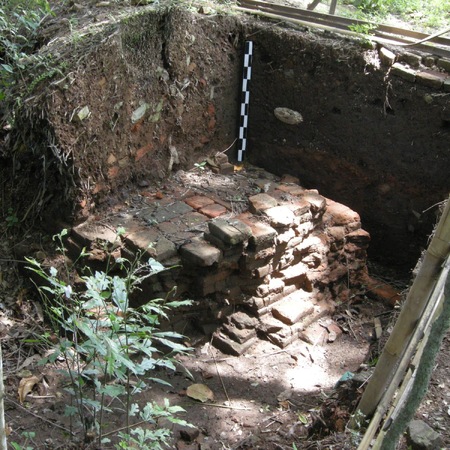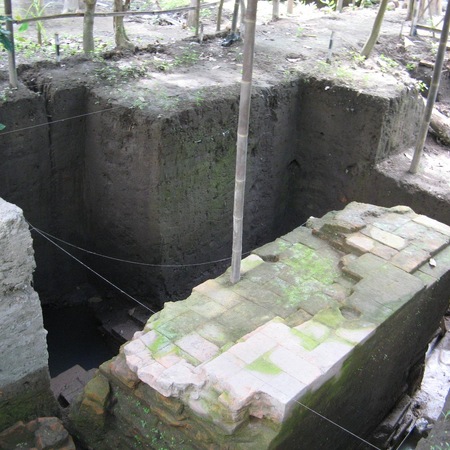Kraton (palace) Pleret was built to fulfill the wish of Susuhunan Amangkurat I (1646-1677), who did not want to stay at his late father’s (Sultan Agung, 1613-1646) former palace. Amangkurat I moved his new palace Purarya (Pleret) in 1647. The construction of the enclosure-wall was finished in two months. The fortified wall was made from bricks inserted with natural stones, the upper part of the wall had the shape of a triangular made from white blocks. The size of the walled area was circa 640 x 540 m (circa 345,600 m 2). The wall was five till six meter high and 1,5 m thick. To gates gave entrance to the craton.
In 1674 prince Trunanjaya revolted against Amangkurat I, who was forced to flee from his craton Pleret was ransacked The Sunan’s two sons also joined their father. The second son, prince Puger, succeeded to regain Pleret. He crowned himself as King of Mataram. The result was a war with his elder brother Anom (Sunan Amangkurat II) in Kartasura, who with support of the VOC defeated Puger. Kartasura became the capital of the kingdom Mataram. Craton Plered was abandoned.
During the Dipponegoro War (1825-1830) the enclosure wall of the craton was still standing. In 1826 followers of the prince occupied the kraton, but they fled after the Dutch East Indian army stormed the wall. At the end ow the 19th century the wall was demolished and the bricks were used to build the local sugar factory. Today there are no more remains of the wall visible. Since 1978 archaeologists have excavated parts of the enclosure wall.

